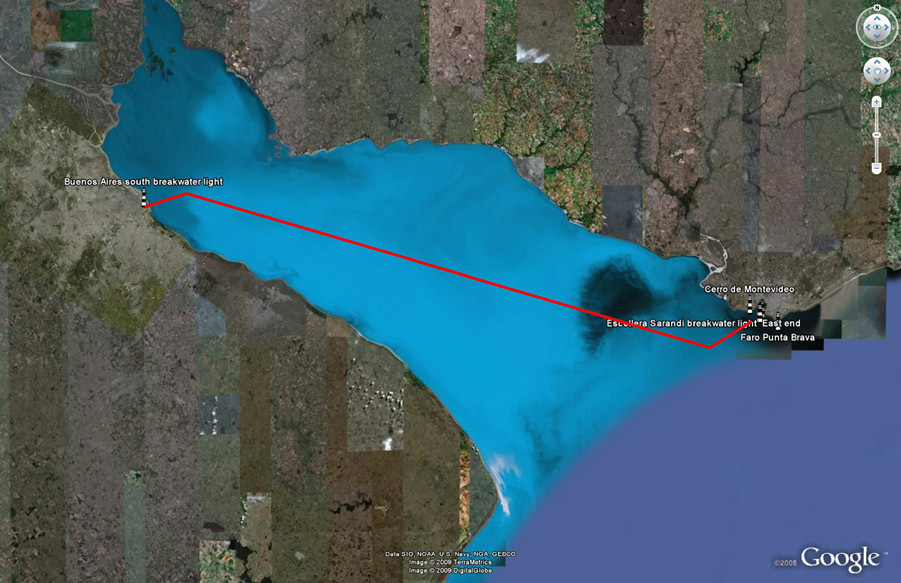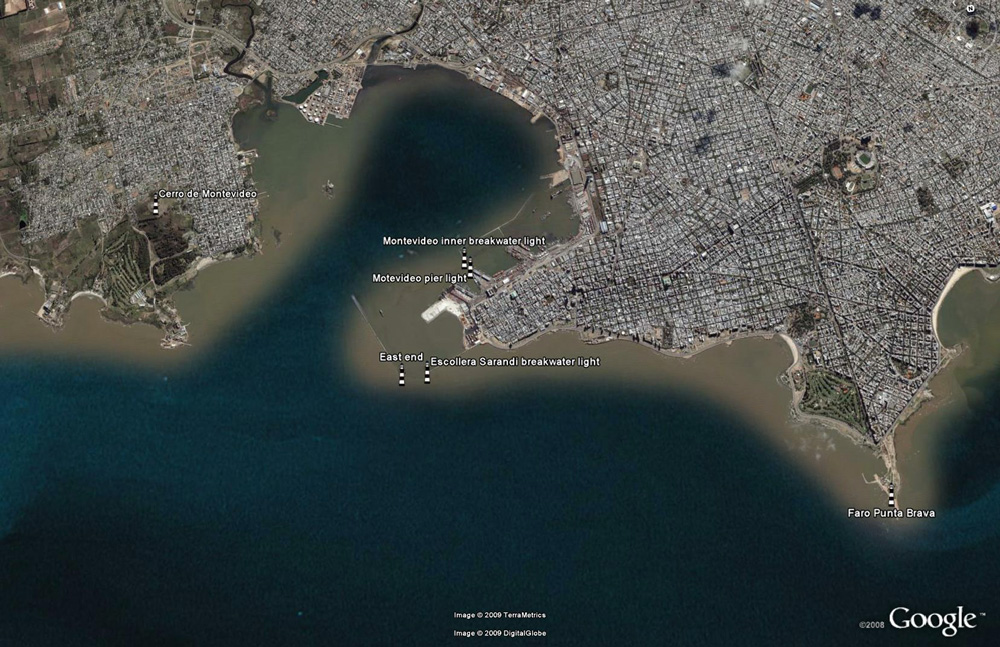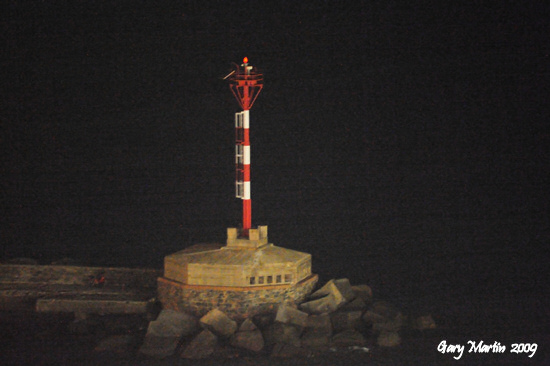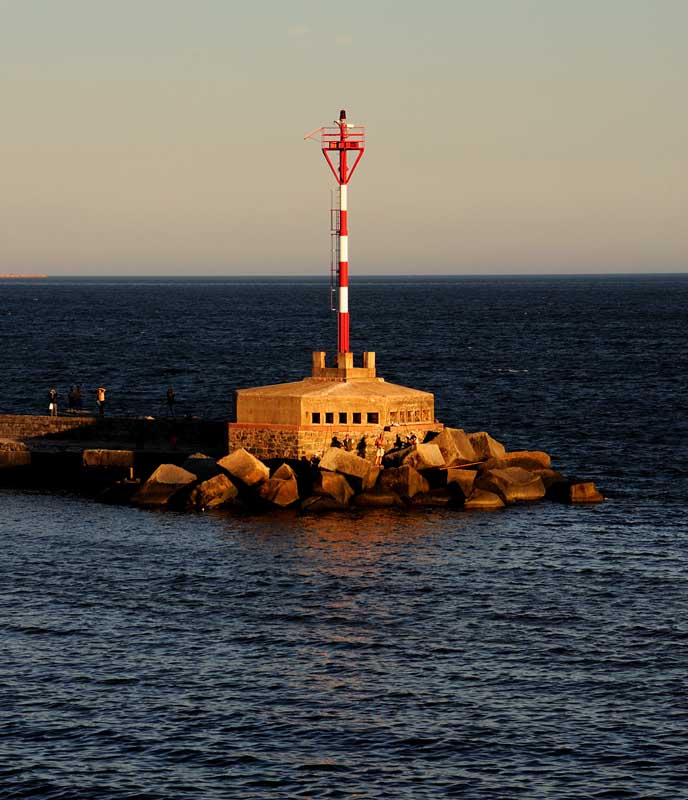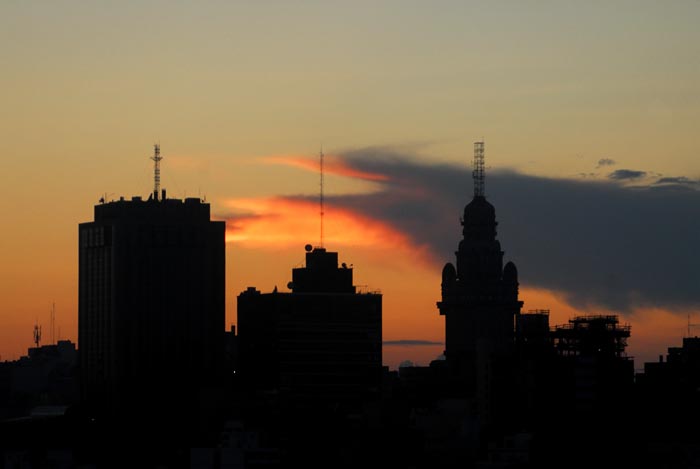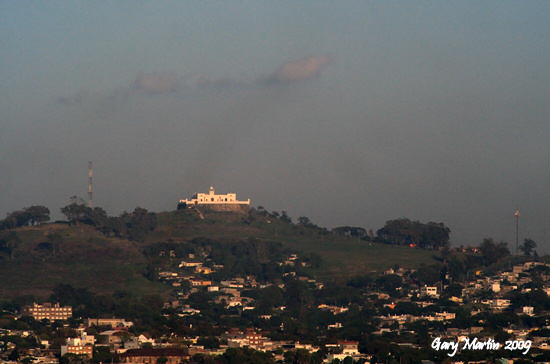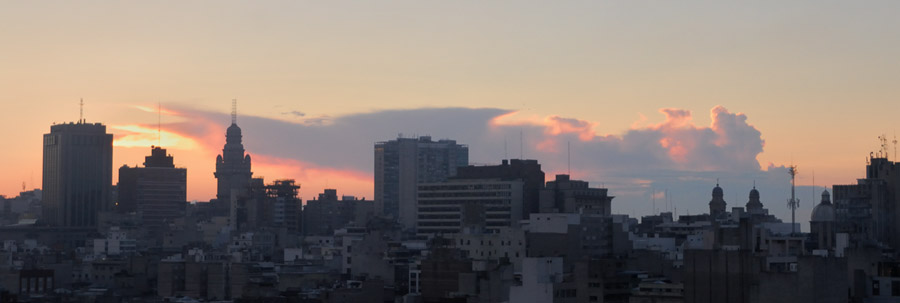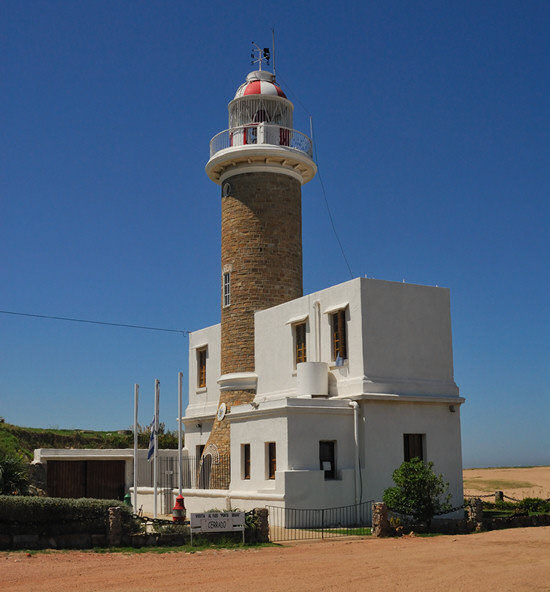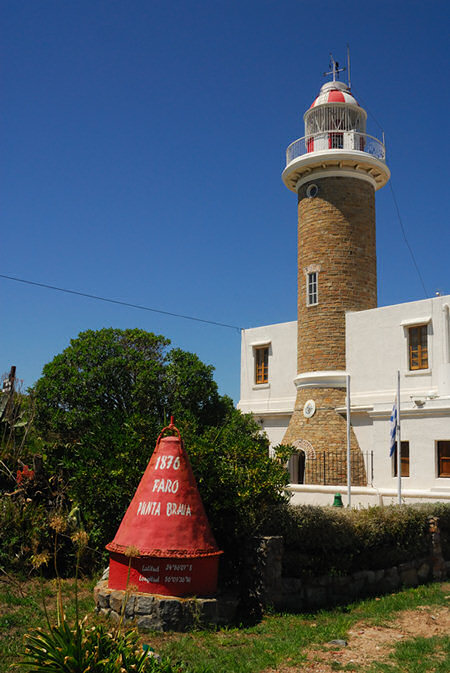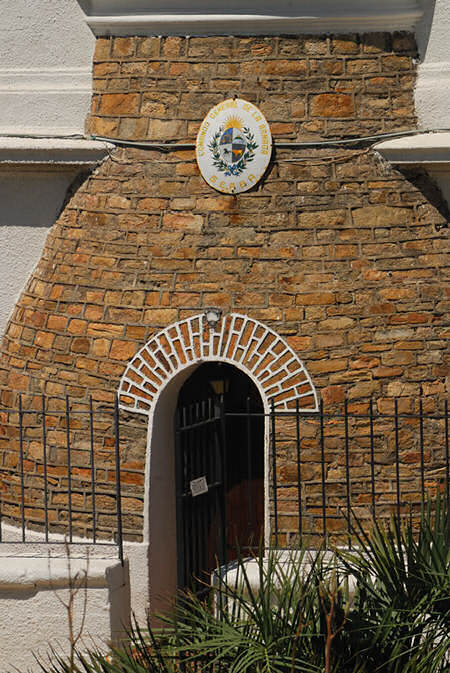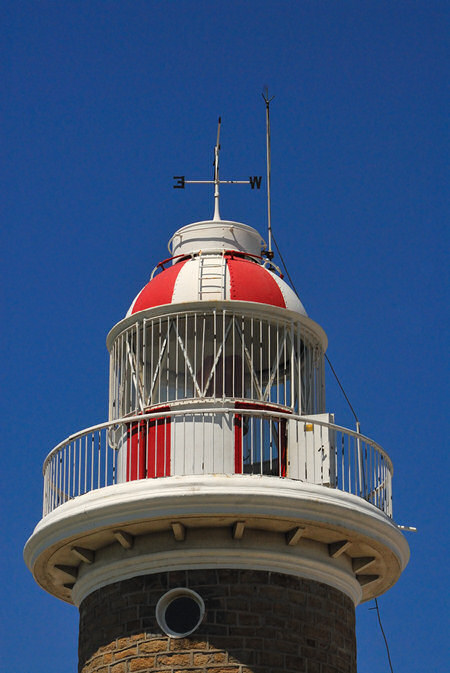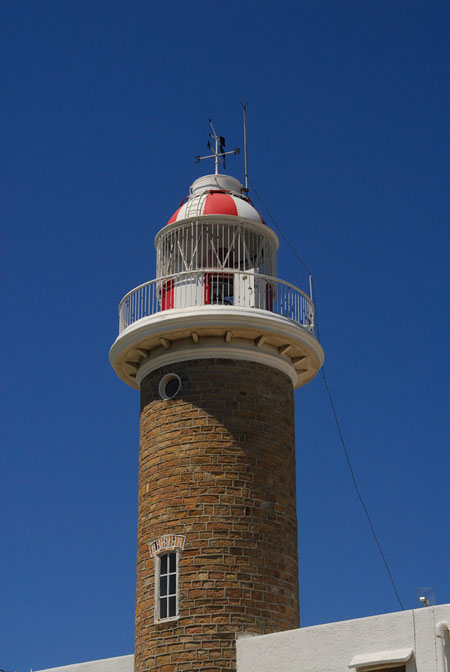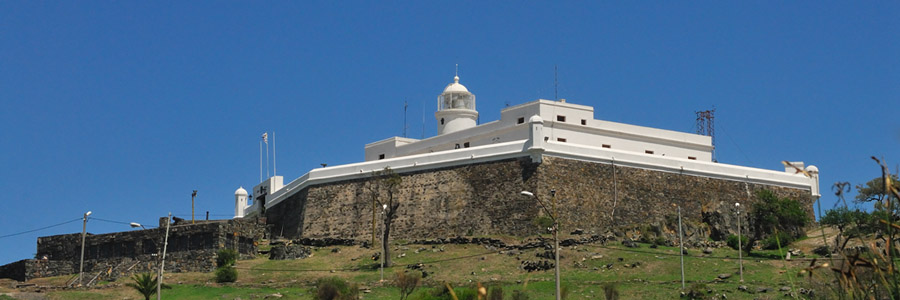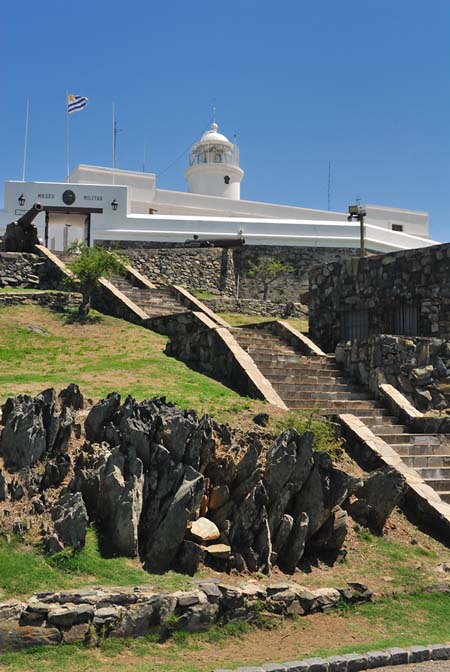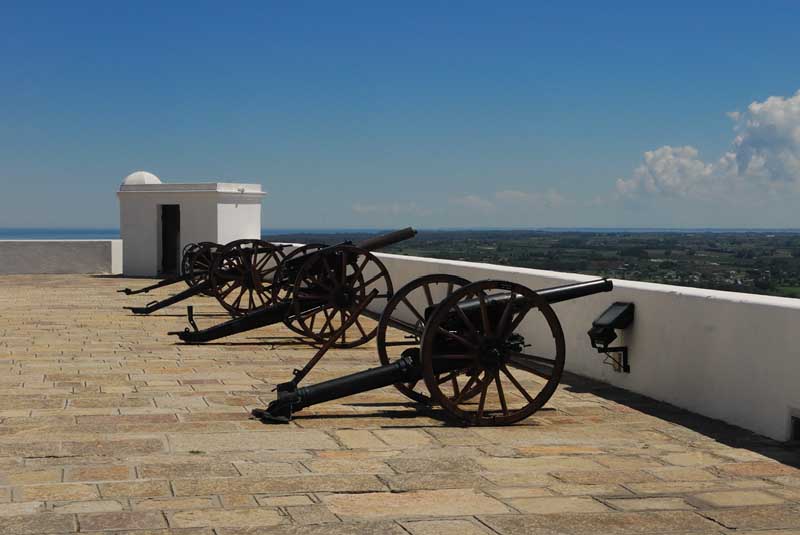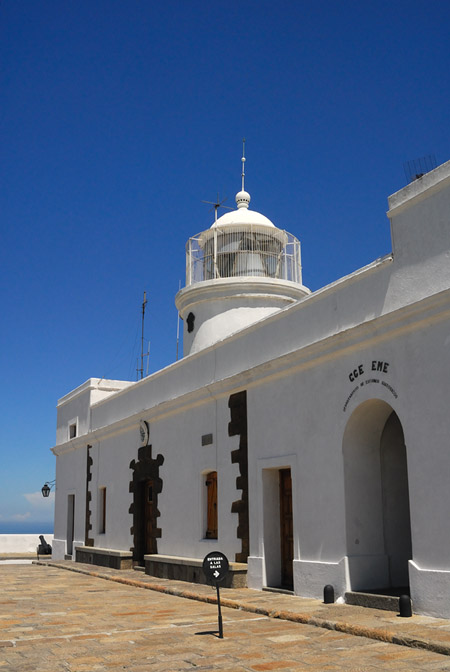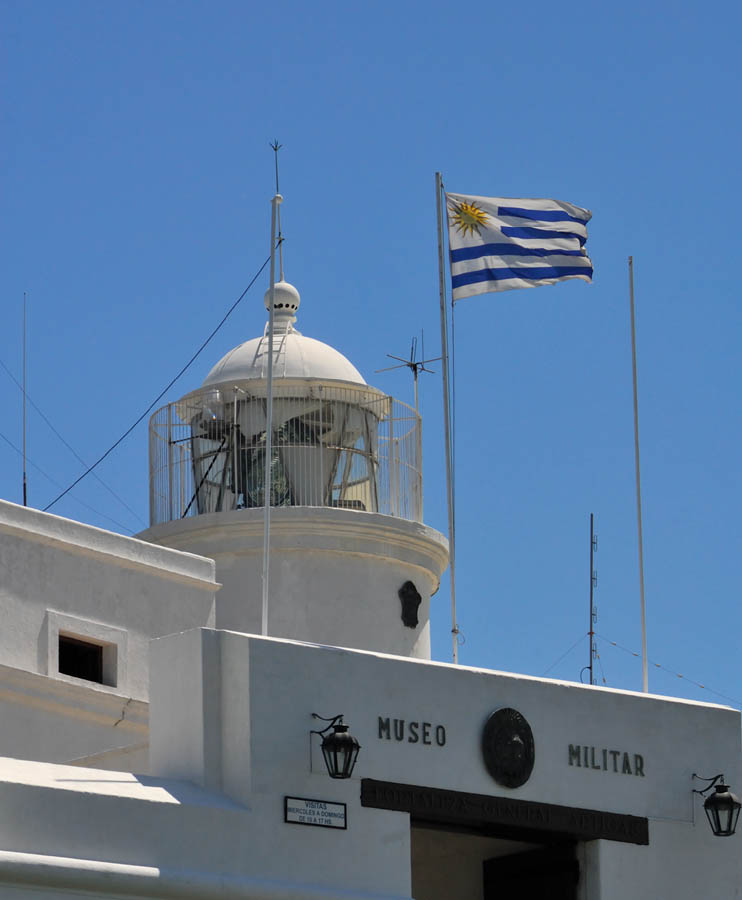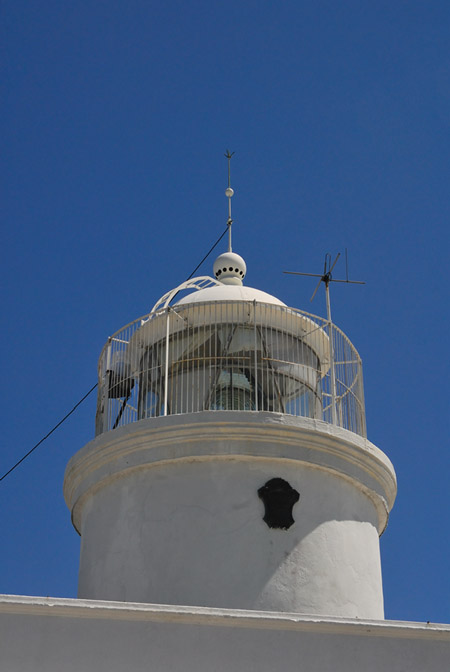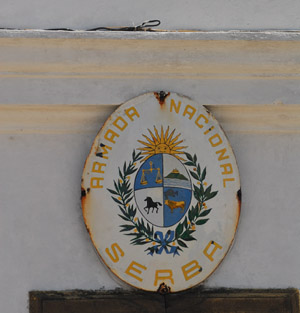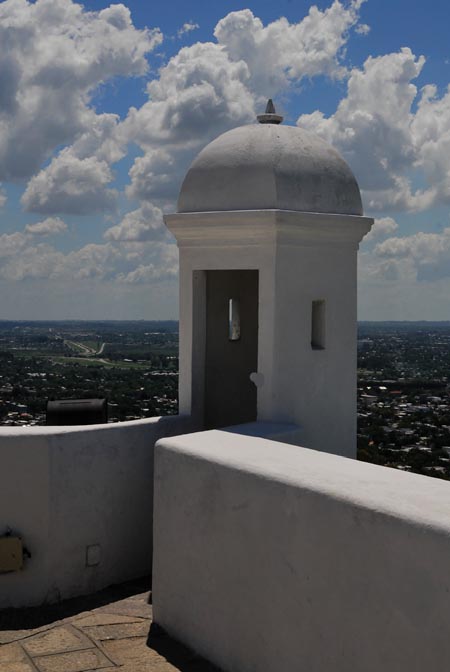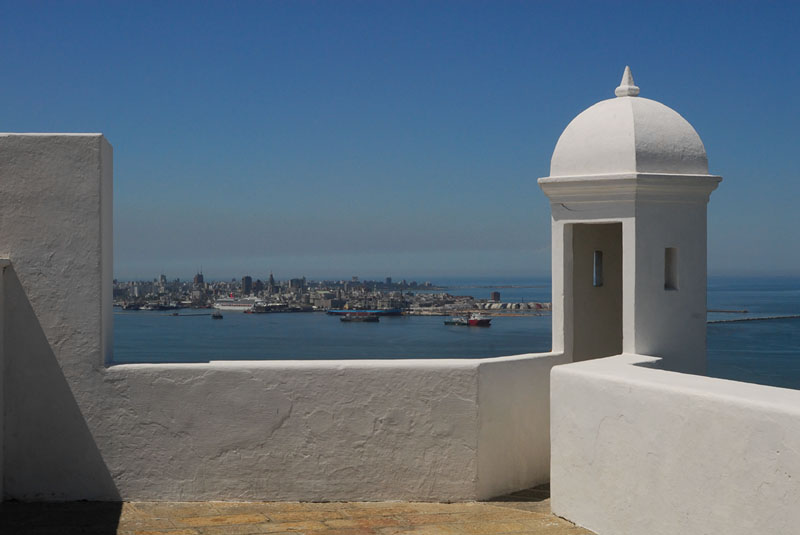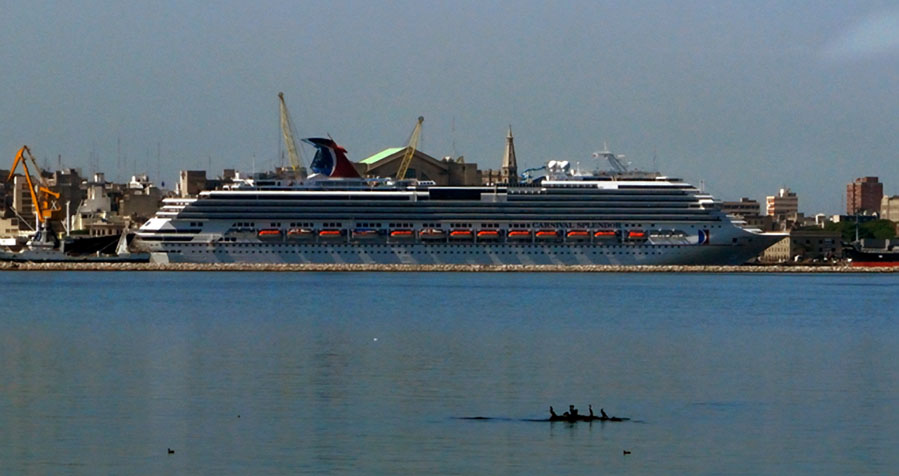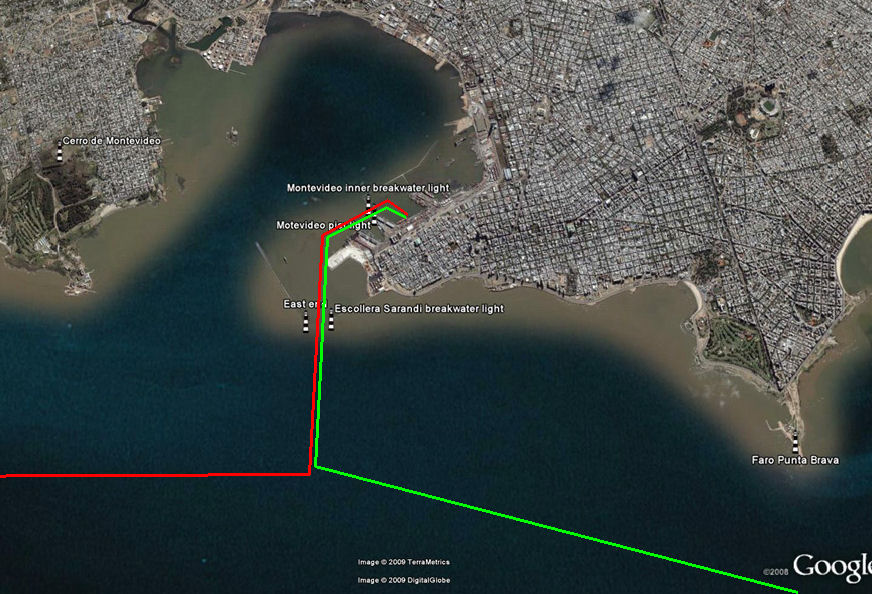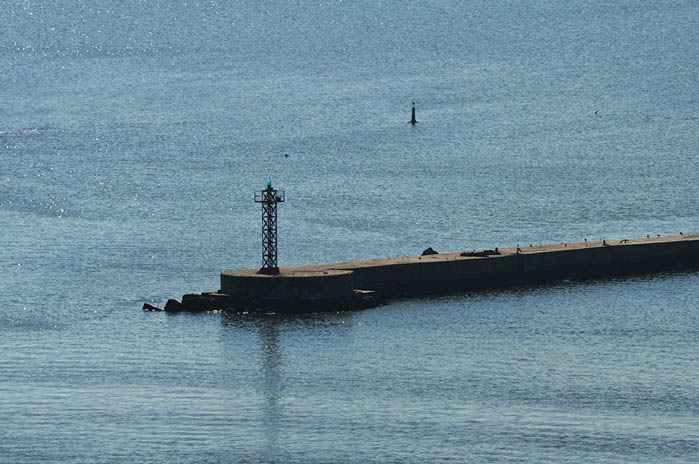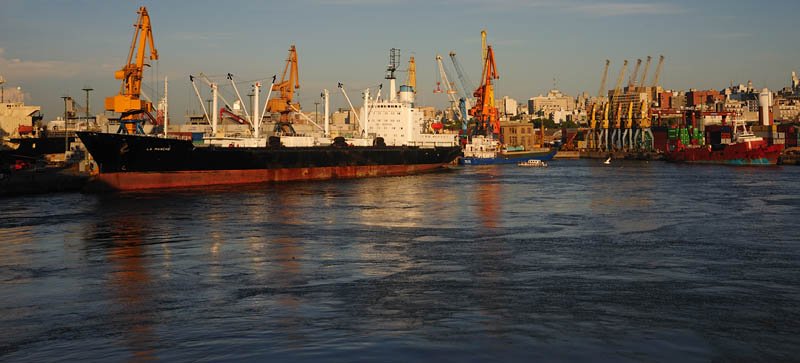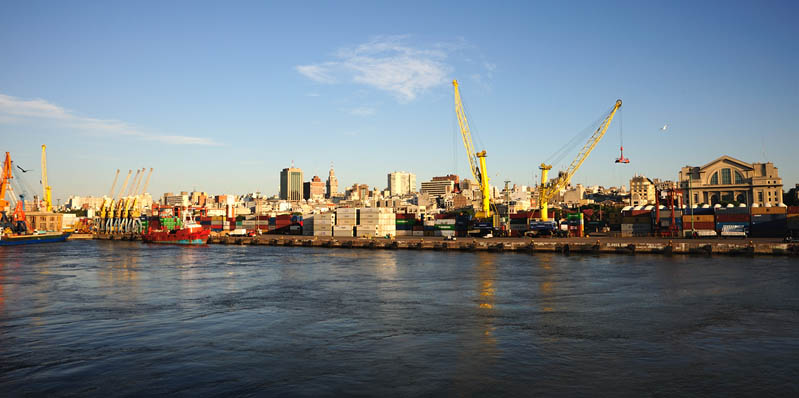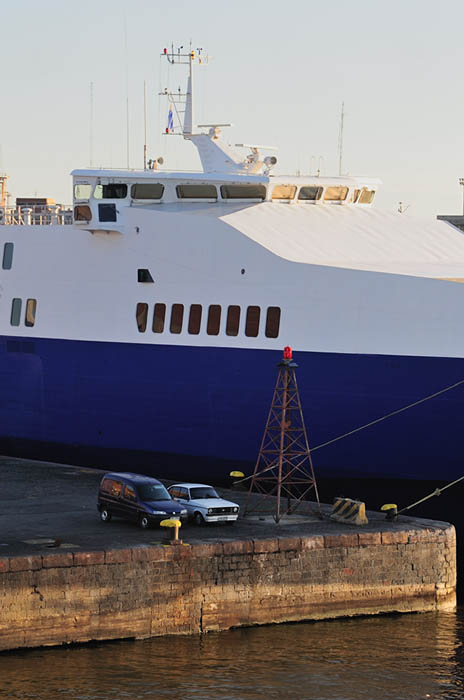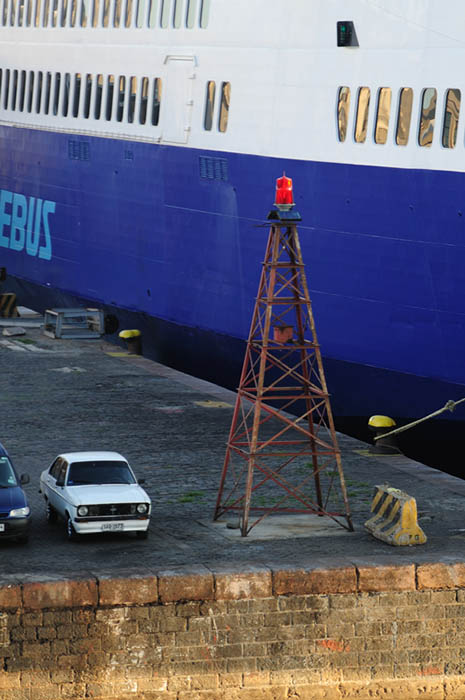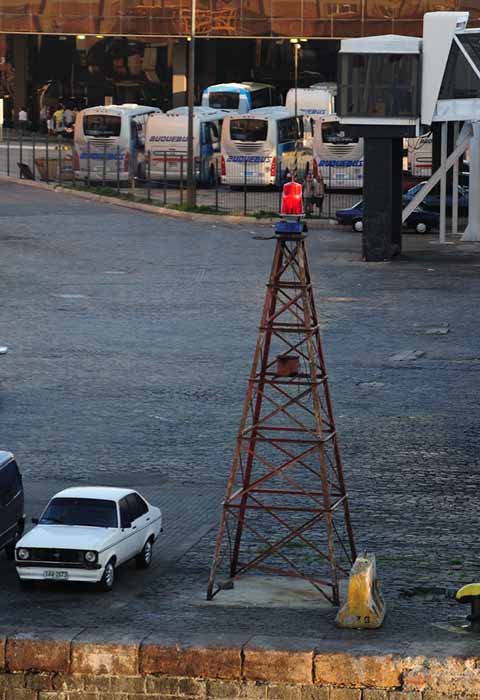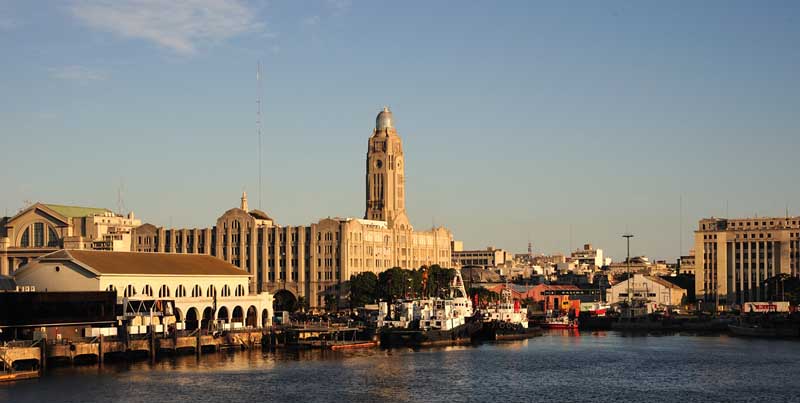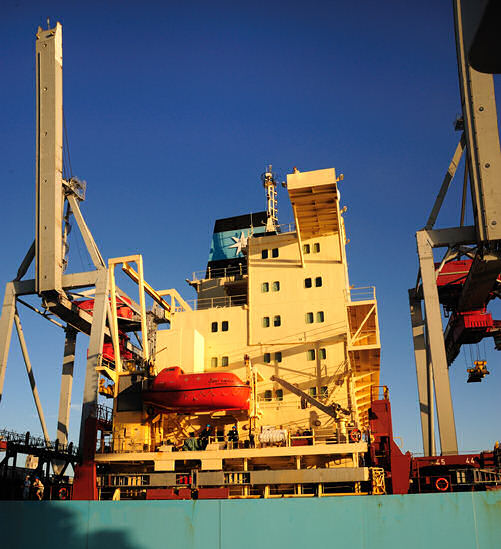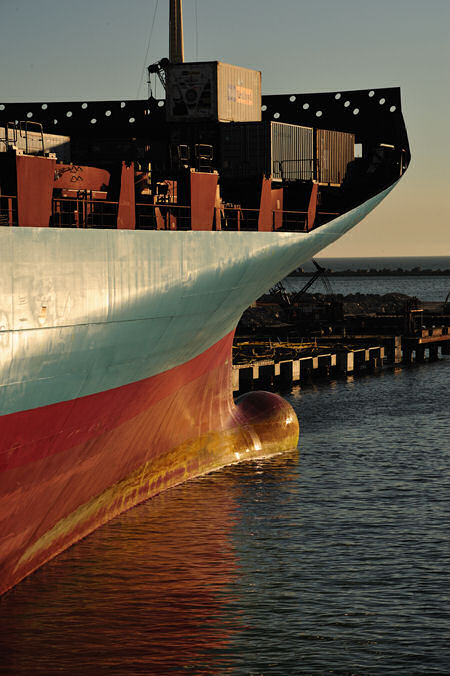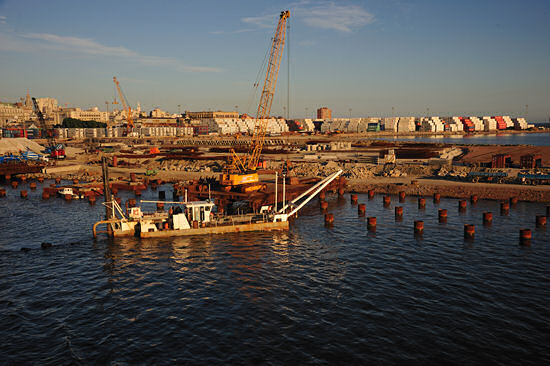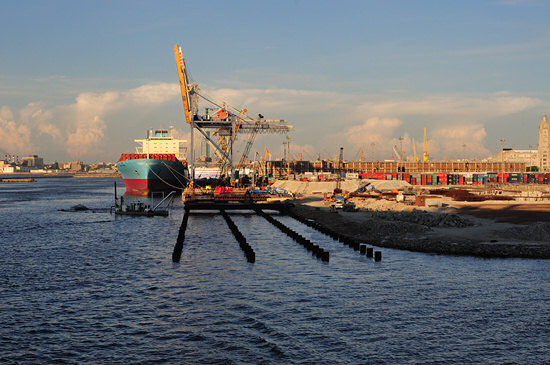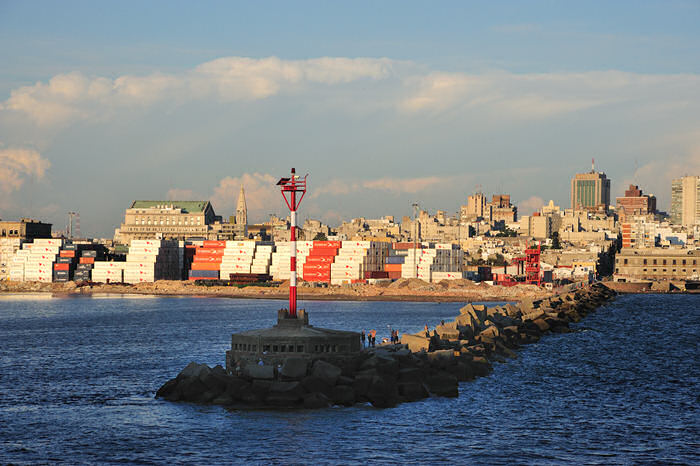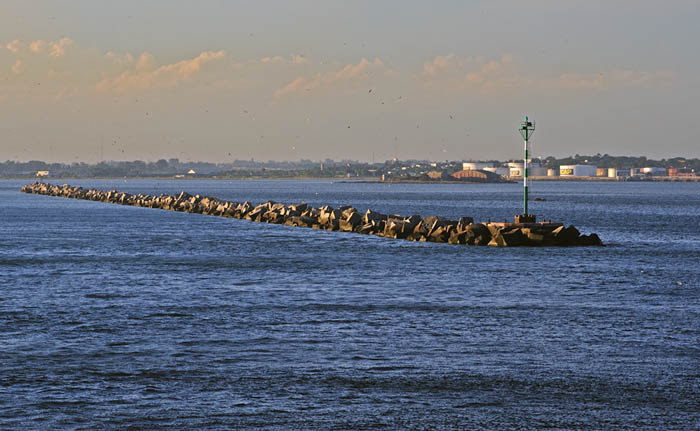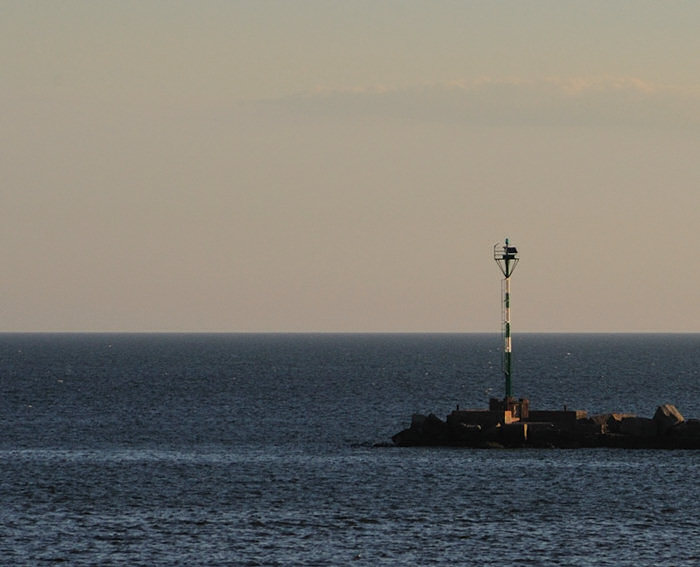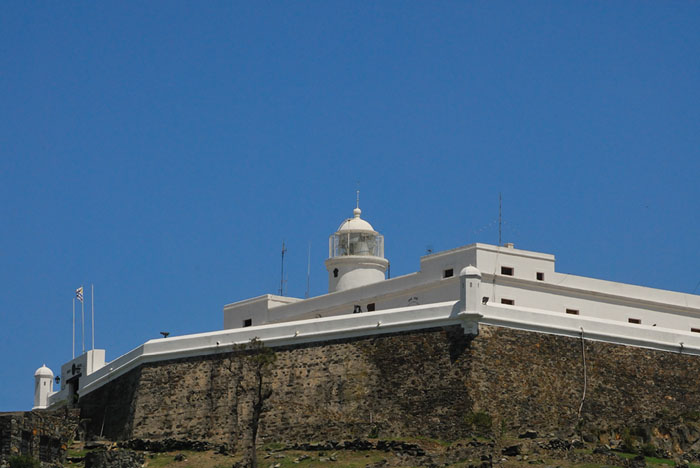 |
 |
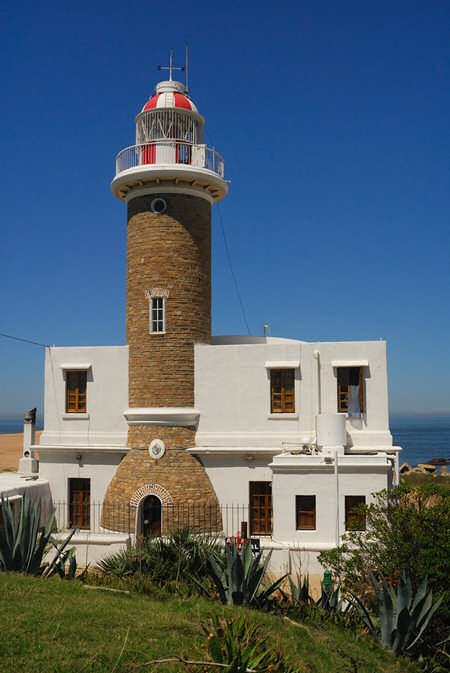 |
We sailed from Buenos Aires at 1700 hrs on schedule. With a vessel as large as Carnival's M/V Splendor, that takes a little time getting started considering that she displaces 113,000 tons and is nearly 1,000 feet in length. The movement away from the wharf was barely perceptible at first and then slowly the gap separating us from the container pier grew. We continued moving away for a time with the aid of the bow and stern thrusters before we finally began to move forward toward the breakwater before a turn to starboard around another passenger liner. We made our way slowly along the breakwater, a good idea since there was about a 90 degree turn to port coming up at the end of the breakwater to enter the channel to leave Buenos Aires. After we were in the channel, we made our way out from shore at a rather leisurely pace of about 12 knots getting to watch the satellite communities of Buenos Aires, moist looking like cities in their own rite, passing along on the shore in the distance off the starboard side. Further out, we passed numerous ships anchored out in the Rio de la Plata delta, at one point 20 readily visible. About 1930, we got ready to go down to deck 5 aft for the first evening's dinner at what turned out to be a table for 10 but at which there were only ever 8 of us at. We had tablemates from the SF bay area, a couple from outside of Cleveland, and a couple from the Haliax, NS area. All were great folks and it was fun dining with them most of the evenings of our voyage. While we were at dinner that first evening, looking out of the large windows on the port side, a China Shipping Lines container ship went by headed for Buenos Aires that seemed like it couldn't have been more than 100 or so feet away although I suspect that the gap only appeared small because of the size of the vessel. Our first night's sailing would be limited to crossing the Rio de la Plata delta, arriving in Montevideo before dawn the next morning. The satellite view below shows (more or less) the route we were taking across the Rio de la Plata and the expansion shows the Montevideo harbor area as far as the Punta Brava light to the east of the harbor. As you can tell from the expansion there were six lights that I got a chance to photograph while we were in port in Montevideo or from the water entering or leaving the harbor.
We arrived in Montevideo while it was still completely dark the next morning. As we were coming in, you could see the blink of the Escollera Sarandi breakwater light coming up off the starboard side of the Splendor. That said, out onto deck 12, Nikon D3 in hand, the ISO dialed to the max at 25,600 just for grins to see if I could pull it off in the dark with what would be only the light from our vessel as we slid through the opening in the outer breakwater into the harbor.
Continuing into Montevideo harbor, one is next treated to a distant view of Cerro de Montevideo, a fortress dating from 1802 that stands atop a commanding hill on the west side of the Montevideo harbor that also has a lighthouse. Shooting something close in the dark is one thing... trying to pull of the same trick handheld with a long telephoto... well, let's just forget that. As the sun came over the horizon behind me though and began to light the top of the hill or cerro, it was definitely worth shooting! The image on the top left below is a silhouette of Montevideo looking directly toward where the sun was rising. The top right image is Cerro de Montevideo, and the bottom image is a pano of the Montevideo sklyline right at dawn.
We spent our day in Montevideo with an organized and leisurely tour of the city by bus that included old town, the legislative palace, Plaza de la Independencia, and some of the sculptures by Jose Belloni. While we were touring the city by bus, I got only a distant view of Faro Punta Brava in the Punta Carretas section of the city. We got back to the ship around lunchtime and I decided that I wanted to see about arranging something with a cab driver for a personal visit to Punta Brava to photograph the lighthouse. The dispatcher at the end of the pier spoke a little English and my Spanish was rusty from scant use over the last 20 years since we left Texas. Undeterred, I made what I thought was arrangements to get to Punta Brava. Something was obviously lost in the translation and my cab driver, who it turned out was a great fellow and spoke not a word of English, took me to the shopping plaza in Punta Carretas about a mile from the lighthouse. We went back and forth in Spanish and he decided that some assistance was in order, which prompted a quick stop at the Sheraton about a block away. The bellman spokee some English and between his English and my slowly returning Spanish we reached common ground and the cab driver got that I wanted to go to el Faro, the lighthouse. Off we went and were there in 5 minutes! I photographed and captured the collection of images below, except for the pano that was shot from the Splendor when we were leaving Montevideo later that evening for Puerto Madryn. I asked the cab driver in Spanish how much it would cost to go from Punta Brava to Cerro de Montevideo and got back veinte dollares ($20) which prompted a vamonos from me (let's go!) and off we went. I'm sure I got to see neighborhoods of Montevideo on the way to la Fortaleza that most tourists never get to see but about 30 min and completely on the other side of the harbor, we were on top of the hill on which Cerro de Montevideo stands.
Cerro de Montevideo was built in 1802 as a fortress to guard Montevideo harbor and was restored in the 1930's and opened as a military museum in 1939. The old fotress and lighthouse are beautifully restored and the views from atop the hill of the harbor and the city of Montevideo are worth the effort to get there.
From atop Cerro de Montevideo you get excellent views of the Montevideo harbor, including the Splendor moored at the commercial piers.
The best view of the ship, however, was from the bottom of the hill along the divided road that runs along the side of the harbor...
After a lazy remainder of the afternoon, the ship prepared to again depart Montevideo, our next destination the port of Puerto Madryn on Golfo Nuevo several hundred nautical miles to the south. Our route out of the Montevideo harbor would take us that afternoon through the opening in the inner breakwater, past the end of the pier where the Buenos Aires - Montevideo ferry is moored, past the container terminal, and then through the opening in the outer breakwater past the Escollara Sarandi and Escollera Oeste south lights and once again into the open water of the Rio de la Plata. The route out of the harbor is shown by the green line on the satellite image below, along with the location of the various lighthouses that we would be passing.
As the Splendor drew further away from the city of Montevideo out into the open waters of the mouth of the Rio de la Plata, we got a great panoramic view of the city from the upper decks of the ship as the pilot boat ran parallel to our course off the port side...
|
||||||||||||||||||||||||||||||||||||||||||

After dinner,
as the Splendor made her way out one of the channels in the Rio
de la Plata delta toward the open waters of the South Atlantic
ocean, the sunset was spectacular... |
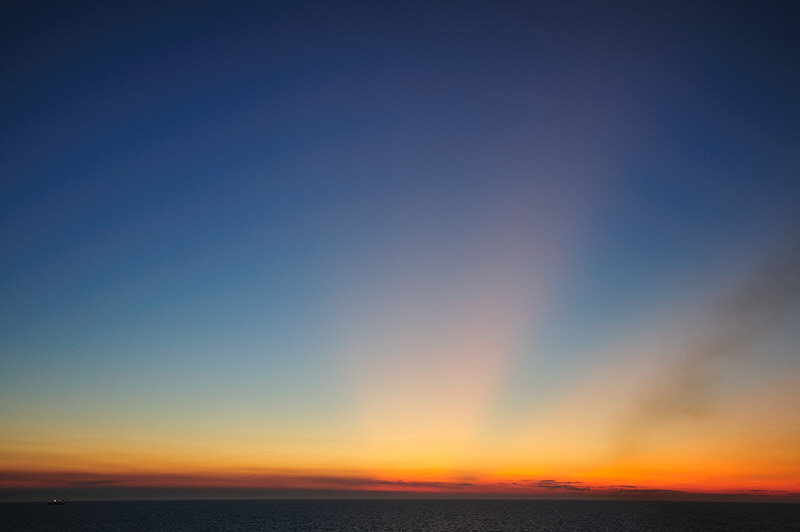
... which brings this segment to a close!
